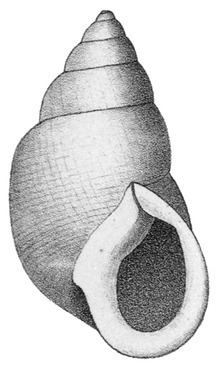Rank Family | ||
 | ||
Similar | ||
Odontostomidae is a taxonomic family of medium-sized to large, air-breathing, tropical and sub-tropical land snails, terrestrial pulmonate gastropod molluscs in the superfamily Orthalicoidea.
Contents
2005 taxonomy
This taxon was placed as the tribe Odontostomini, in the subfamily Bulimulinae, within the family Orthalicidae, according to the taxonomy of the Gastropoda (Bouchet & Rocroi, 2005).
2010 taxonomy
Breure et al. (2010) elevated Odontostomini to Odontostomidae.
Genera
Genera in the family Odontostomidae include:
Description
Species in tribe Odontostomini have the aperture obstructed by internal lamellae, folds or teeth (rarely absent by degeneration); the base is perforate or has an umbilical suture; and the genitalia are extremely lengthened. Jaw either plaited or solid.
Odontostomini is clearly a natural group of genera, confined to South America east of the Andes, and with the exception of some species, south of the Amazon. That the whole series had its inception in a form in which the characteristic apertural teeth had already been developed, is demonstrated by the fact that these lamella and folds are clearly homologous throughout the species of the several genera. It follows from this that the toothless forms, such as Moricandia, are secondarily so, by degeneration of the teeth of their ancestors. Many species show the various stages of tooth degeneration.
